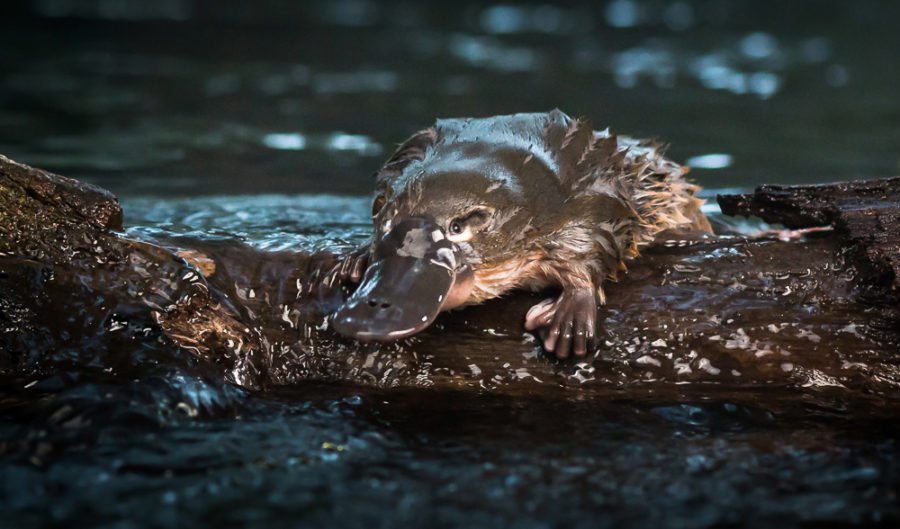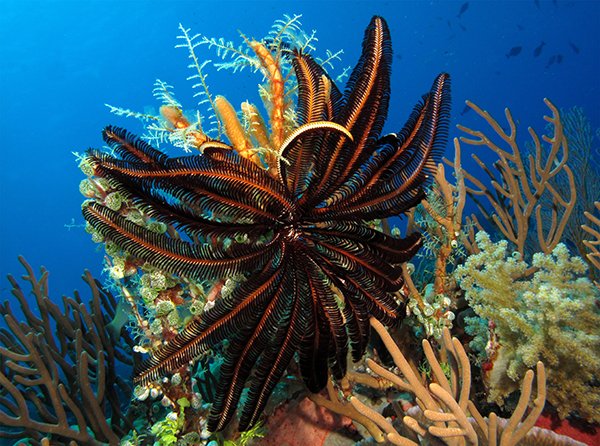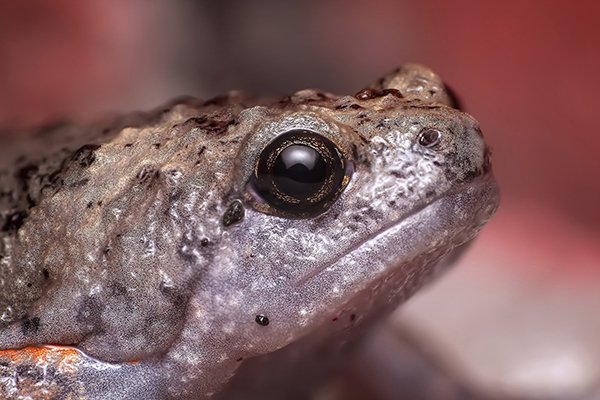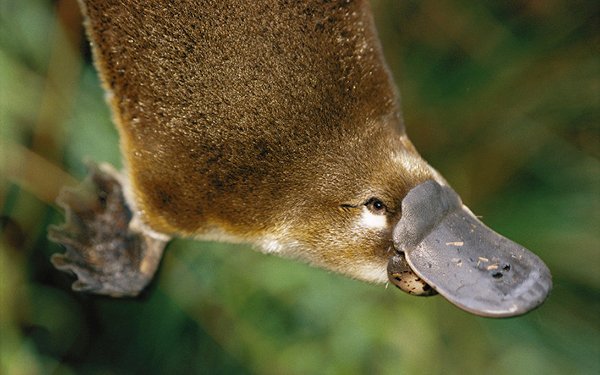Top 10: 2017’s most amazing Australian animal science stories

1. Humpback whales are making a fast comeback
October 2017
There’s hopeful news for humpback whales this year – thanks to a new research methodology, Aussie scientists have been able to predict that humpback whale populations in the southern hemisphere – currently at 33 percent of their pre-whaling numbers – should make a full recovery by 2050.
In South Australia’s Great Australian Bight, researchers found the population size of slow-growing southern right whales is also on the rise, topping at over 200 whales this calving season.
Scientists have suggested that a rich, seasonal upwelling of phytoplankton every autumn-early winter may be one drawcard for the whales.
Some southern hemisphere whale species will not have reached half their pre-whaling numbers by 2100, due to slow growth rates and heavy historical whaling.

(Image Credit: Diego Cotterle)
2. Researchers plunge into Australia’s oceans in search of new medicines
August 2017
Conventional and alternative medicines usually come from land-based organisms – probably because it’s easier to study the chemistry of a mushroom or test the effectiveness of a flower oil. But researchers are now diving into the world of marine organisms, finding new treatments for some of the world’s most devastating diseases.
So far, three natural products from the world’s oceans have been approved as prescription drugs: a painkiller from the venom of the cone snail, and two anti-cancer drugs – one from the Caribbean sea squirt, and one derived from a sea sponge.
Aussie oceans are also playing their part. In October, scientists discovered that an Australian marine snail is a promising new source of anti-inflammatory compounds. Researchers have now taken up an in-depth study of the chemical makeup of feather stars and sea-lillies.
Sea-snail researcher Kirsten Benkendorff from Southern University said: “New non-steroidal drug leads for the treatment of inflammation are urgently needed. Marine molluscs are widely used as traditional medicines for the treatment of inflammation, but few scientific studies have been undertaken to test the efficacy of these natural medicines. Our study indicates the potential for developing new scientifically substantiated natural anti-inflammatory medicines from these marine snails.”

(Image Credit: Queensland Museum)
3. It’s not easy being biphasic – Aussie frogs may be different but their tadpoles are samey
August 2017
Usually when an animal evolves into a different species, it looks different as a baby as well as an adult. Not so for frogs, it seems. There are a wide variety of frog species across Australia’s continent, each evolving separately according to the different habitats they exist in. And in August, researchers studied 166 Australian frog species and found that, while the adult phase of the frog life cycle are evolving into widely varying body shapes, the tadpole phases are diverging to become more alike.

(Image Credit: CCO)
4. A breeding technique used in agriculture is saving our cutest Aussie animals
September 2017
Australia’s incredibly wide range of small mammals and marsupials play a vital role in mixing organic matter in our soils and keeping ecosystems in balance by eating fruit, seeds and insects. But European settlement and non-native predators have decimated their numbers. Scientists are now working with government and conservation groups to save these species using a technique called “genetic rescue.”
In an ideal genetic rescue, experts introduce individuals from a healthy large population to a small recipient population, increase their numbers in a controlled breeding program, manage the environmental issues that drove the smaller group to the brink in the first place and then reintroduce them back into their now improved and protected habitat.
This year, the technique has increased the population numbers and survival rates of Australia’s endangered mountain pygmy possum. Healthy males were brought from a larger population at Mt Hotham to an endangered group of females at Mt Buller. The threatened population and individual survival rates are now at their highest numbers since 1996.
The technique is also being used to help save the eastern barred bandicoot. Once common in Victoria, they were devastated by foxes and now only exist in captivity. The low numbers have resulted in low genetic diversity, which is a threat to plans to reintroduce them back into wild areas where foxes have been eradicated.
Researchers are now carefully crossing Tasmanian eastern barred bandicoots with the Victorian animals. So far, the initial trials have gone well, and plans are in place to build up the population and start releases in carefully controlled reserves.

(Image Credit: CCO)
5. Australia’s most charismatic insect is back
October 2017
The Lord Howe Island stick insect was driven extinct many years ago by introduced rats… or so we believed. But this year, a team of Japanese and Australian researchers used gene sequencing to confirm the Lord Howe Island Stick Insect is no longer extinct.
Through genetic sequencing of museum specimens, the researchers found that living stick insects found on Ball’s Pyramid, a volcanic stack about 20km away from Lord Howe Island, are the same species.
When climbers found live insects on Balls Pyramid in the 1960’s, questions were raised about some key differences between them and the preserved museum specimens, which seemed larger, with thicker legs and bigger spurs. But now it seems environmental conditions may account for the differences, or perhaps 19th century zoologists selected bigger specimens for preservation.
The gigantic insects are now being bred at Melbourne Zoo for reintroduction to Lord Howe Island once rats have been eradicated from the island.

(Image Credit: Granitethighs)
6. Platypus and Echidna venom
November 2016
A hormone found in the venom of Australia’s iconic Platypus could pave the way to new treatments for humans suffering type two diabetes.
The hormone GLP-1 is secreted in the gut of humans and animals. It stimulates the release of insulin to lower blood glucose levels. It typically degrades within minutes.
In people with type II diabetes, this means there isn’t a sufficient amount of GLP-1 to maintain a proper blood sugar balance. That’s why medication is needed to help provide an extended release of insulin.
The male platypus has a venomous spur on its hind feet that it uses to compete against other males for females. South Australian researchers have discovered that the venom contains a form of GLP-1 that has evolved changes that make it resistant to the rapid degradation of the hormone usually seen in humans. Further research might uncover a way to apply the more stable form of GLP-1 to diabetes treatments.

(Image Credit: University of Adelaide)
7. A new species of everyone’s favourite dragon filmed for the first time
January 2017
A species of sea dragon known only from museum specimens was filmed in the wild for the first time by Aussie researchers.
The species was first discovered in 2015 thanks to four specimens preserved in museum collections that had been misidentified as common sea dragons. Unlike the common and leafy sea dragon species which inhabit depths of 3-25 metres, the ruby sea dragon lives in deeper parts of the ocean. This may explain why it hasn’t been seen in the wild until now.
Western Australian researchers used a remote-controlled camera to film the sea dragons at a depth of more than 50 m. The camera showed that the ruby sea dragon has a prehensile tail that allows it to hold onto stable objects to avoid behind swept away in ocean surges. It has no leaf-shapes on its body for camouflage, instead using its red colour to help it hide in the depths.

(Image Credit: Scripps Oceanography/UC San Diego)
8. We may need to learn to live with a lot more dingoes
May 2017
Dingoes could be the antidote to Australia’s highly destructive red fox problem, if reintroduced to areas where humans have removed them. A study published in May showed that while fox numbers were lower in the centre of areas where dingoes range, at the edges of dingo ranges, there were significantly more foxes. There is also evidence that dingoes can help control feral cats in similar ways.
According to another study this year, dingoes don’t pose the threat that introduced predators pose to endangered native species such as bilbies and bandicoots, because the small mammals have developed strategies to coexist with dingoes over the thousands of years they have lived together.
A study into Australia’s 5,600km dingo fence by the University of New South Wales revealed that dingo control also leads to poorer soil, possibly because dingoes help control the number of kangaroos that graze on the vegetation.
Dingoes are often blamed for livestock deaths, but a two year experiment performed by researchers at a large cattle station in South Australia showed that stopping dingo deaths did not result in high or increasing livestock deaths through predation. The main causes of livestock deaths were due to the drying of silted dams.
So how can we live together as a species? A study released by Griffith University looked at 108 previous studies into ways that humans can change dingo behaviour, particularly when visiting Fraser Island. The results suggest that electric fences, personal protective sprays containing chemical irritants, shock collars and “sturdy umbrellas” could be the best ways to keep people safe from dingoes while visiting the island.

(Image Credit: Bobby Tamayo)
9. A vaccine may soon save the Tasmanian Devil
March 2017
Scientists are closing in on the deadly disease that has been wiping out the Tasmanian Devil. In March, an international study showed that immunotherapy was a viable treatment of devil facial tumour disease.
The researchers scientists used immunotherapy on devils with golf ball sized tumours, and saw the tumours gradually shrink and disappear over three months.
Confirming that it’s possible to trigger the devil’s immune system to recognise and destroy established tumours is an important step in saving the Devil. The research is now focused on improving the devil’s response to immunisation.

(Image Credit: Wikicommons)
10. Emus and ostriches are not related after all
July 2017
Science books once confidently claimed that emus and ostriches are from the same family, sharing a common ancestor that couldn’t fly. However, DNA studies released in July have confirmed that emus are more closely related to a group of small flying birds called tinamous.
The researchers also found that as embryos in the egg, ostriches and emus have very different wing growth patterns, further suggesting that the large size and flightlessness of both birds evolved independently.
Also in July, researchers from Monash University released a study showing that a gene that is well-known as a regulator of heart development in mammals was also involved in the development of emu’s distinctive flightless wings. Scientists hope to explore whether the gene may also be relevant to human limb development, because it may play a role in previously unexplained congenital limb reductions.

(Image Credit: Pixabay)

